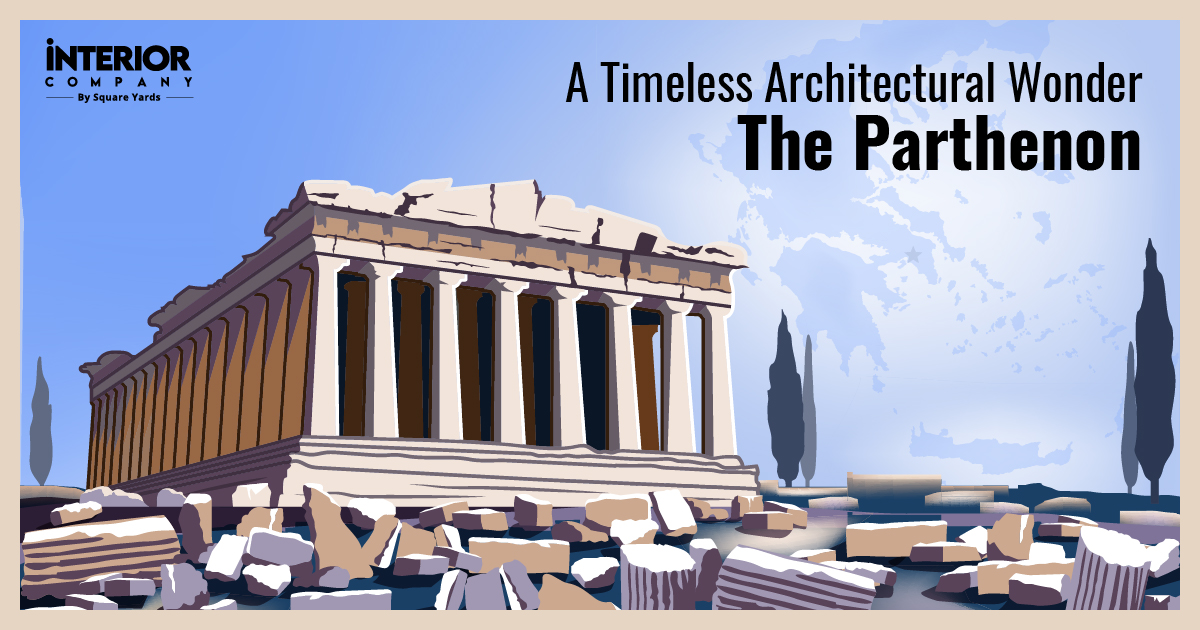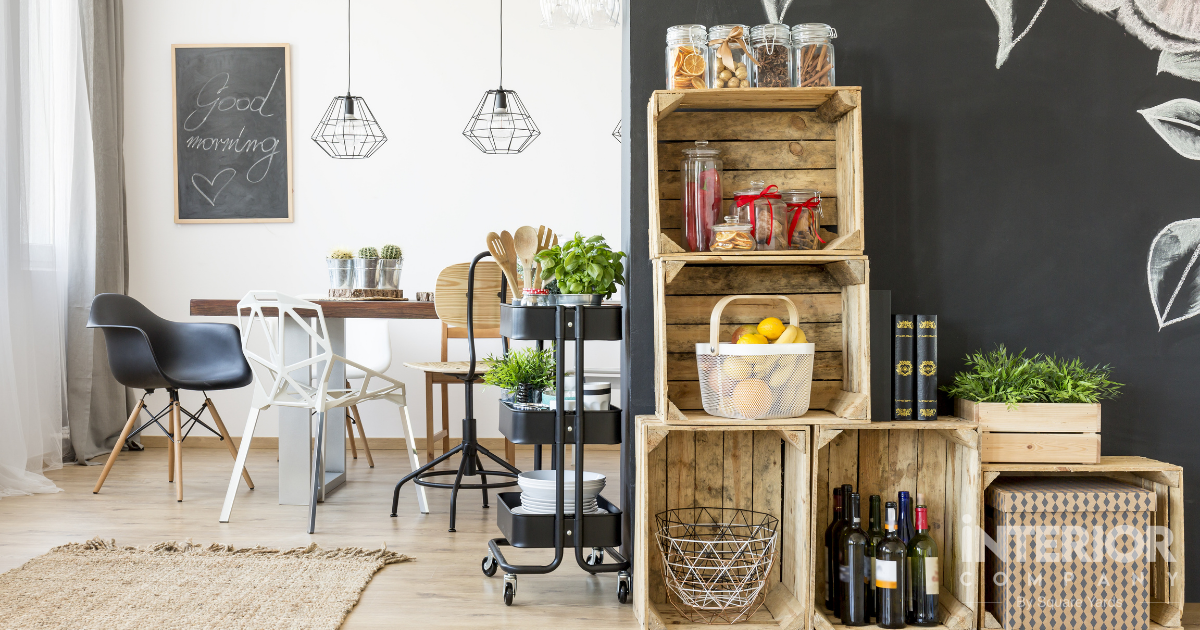- Home
- Trends
- Architecture
- Buildings
- Architectural Of Petra Jordan
A Journey Through Time in Jordan- the Prehistoric City of Petra
Are you one of those history-buffs or curious travellers? If so, you surely must have heard about the archaeological wonder embedded in the rugged desert of present-day Jordan, PETRA or popularly known as the “Rose City”. Carved out from rosy pink sandstones, this pre-historic city is an awe-inspiring example of ingenuity and engineering that have survived the ages.
Table of Content
After two millennia, Petra unveils the secrets of this once-great civilization, its splendour and timelessness beguiling all who behold it. So, let's step back in time and traverse through narrow pathways to embark on the journey of the astonishing craftsmanship and legacy of Petra Architecture in Jordan.
Who Built The Petra City?
Once a thriving empire nestled in the sandstones of the high desert of Jordan, the ancient city of Petra is a story of a lost civilization. Founded by the Nabateans- a nomadic Arab tribe is known for their glorious fortune from the lucrative incense trade between Arabia, Egypt, and Syria to Greece. They rose to power and ruled the capital between 400 BC and 106 AD for almost five hundred years while creating a cultural and commercial hub that led to the eccentric style of art and architecture.
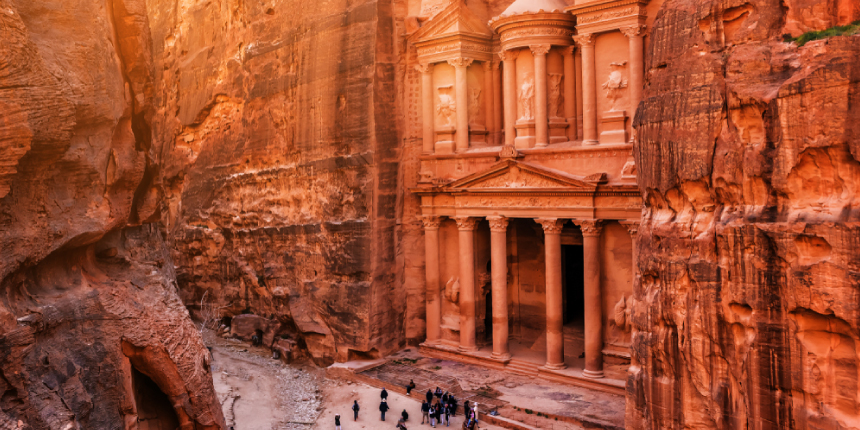
Did You Know? Filming for Iconic Hollywood flick Indiana Jones and the Last Crusade took place in Petra, so next time you binge-watch the movie, keep an eye out for the beautiful majestic city!
However, their prosperity was threatened when the Greek Empire attacked the city in 312 BC, but the Nabateans fought and succeeded in repelling the invasion. Unfortunately, in 106 AD, the Romans invaded and acquired Petra and renamed the area Arabia Petraea.
Also Read: Construction of the Great Wall of China
During this time, the Ancient city of Petra underwent a dramatic transformation converting temples and private monuments into public spaces like the 6000-seat amphitheatre and other impeccable facades, similar elements of the Roman cities of that era. It's amazing to think how these impressive feats of architecture are achieved by carving from the top down. We'll explore this more.
Rise and Fall of the Ancient City Of Petra
After a devastating earthquake in the fourth century, Romans abandoned Petra leading to its decline, leaving the city shrouded in obscurity. Whatever remained of Petra was captured by the Byzantine Empire, but the city lost its charm, and the streets along with the trade centre were left in ruins. As a result, Petra became unknown to Westerners for many centuries.
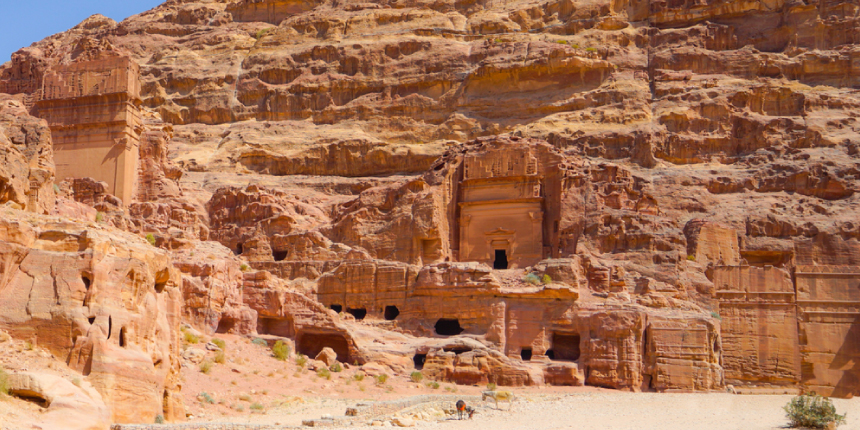
All good things come to an end, and Petra was no exception. The ephemeral beauty of the mystic city eventually faded away.
Until in 1812, it was rediscovered by historian and Swiss explorer Johann Burckhardt, and his captivating findings drew the attention of archaeologists everywhere to uncover the secrets of the Ancient City of Petra. Today, it is a UNESCO World Heritage Site, and one of the new Seven Wonders of the World.
Distinctive Architecture of Petra in Jordan
The beauty of Petra’s architecture in Jordan encompasses a creative blend of the design styles covering the Nabatean, Roman, and Byzantine vision. The Nabateans embraced the natural geographical features and used the technique of rock-cut architecture to carve the city’s imposing structure out of the massive rocks. It’s home to a dozen temples, tombs, and churches carved from red sandstone surrounded by tunnels and valleys.
Also Read: Machu Picchu Architecture and Design
Another astounding feat of engineering of the Nabataeans is the water management system that comprises a network of reservoirs, dams, and underground cisterns to store and conserve rainwater. Later, the Romans and Byzantines added their elements to the city, including the Corinthian columns and Hellenistic features influenced by Greek culture.
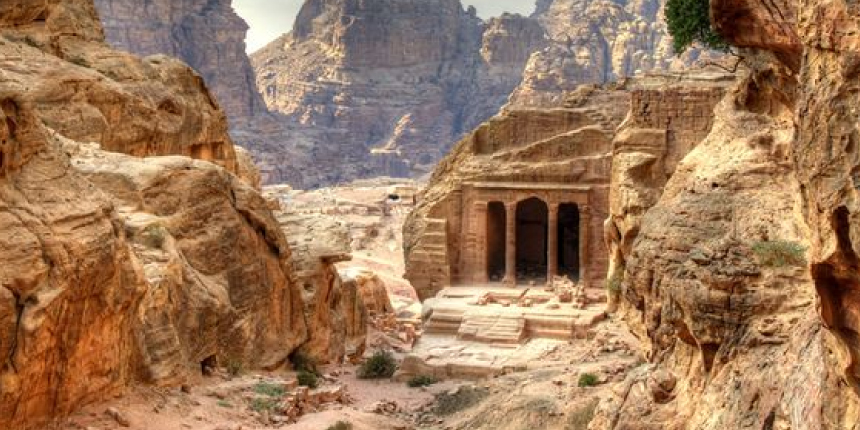
Now as we have read about its one-of-a-kind architecture, we discover the monumental structures and raw beauty of Petra that have stood the test of time.
Iconic Structures Petra Greek Architecture
Al Khazneh (The Treasury)
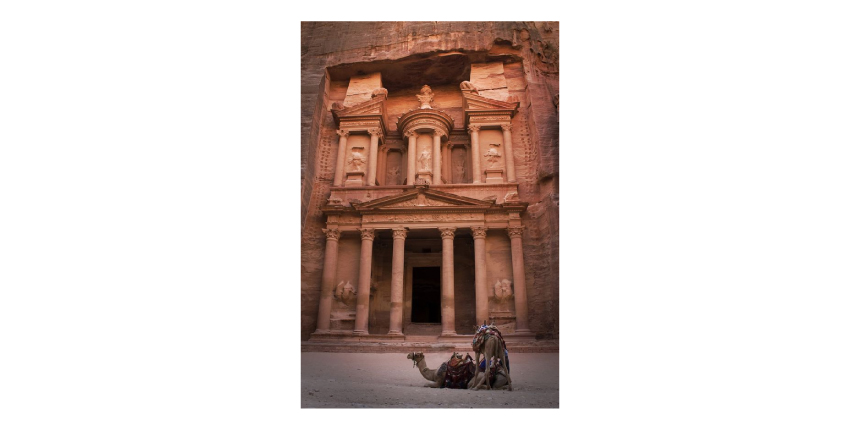
Source: Pinterest
One of the most renowned and elaborate structures of Petra is the Treasury, carved from deep rock architecture and features intricate carvings. The myth was it had hoards of treasure and vast riches, as one can imagine from the enormous wealth of the empire. However, it was built as a mausoleum and a tomb of the Nabataean King.
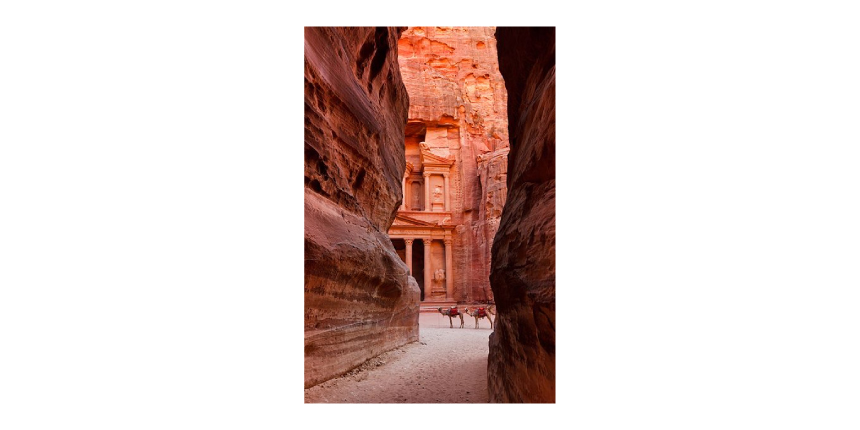
Source: Pinterest
Interestingly, the site is accessed through a narrow opening Siq ' a 1.2 km gorge flanked by rocks on each side ' this serves as a unique entrance to the city, making it gruelling for hostile forces at that time to invade.
Ad-Deir: The Monastery
Tucked away in the hills, this Monastery is one of the colossal structures of the ancient city. Soaring 45 metres high and 50 metres wide, this Nabataean tomb features doric columns and sculpted pediments and is adorned with crosses carved into its walls.

Source: Pinterest
Though, the most striking element is the journey – a zigzagging trek up 800 steps. Sounds challenging? Yes, but the exhilarating views of Petra and the surrounding desert will leave you in awe. If you’re brave enough, it’s worth the shot!
Roman Theatre
Constructed during the time of King Aretas, this imperial amphitheatre was sculpted from solid rock and designed with precision while providing seating to 6000 people. It captivates the spectators with the stunning backdrop of the Petra Greek Valley and its excellent acoustics. This phenomenal structure celebrates the city’s vibrant art, culture, and Roman engineering skills.
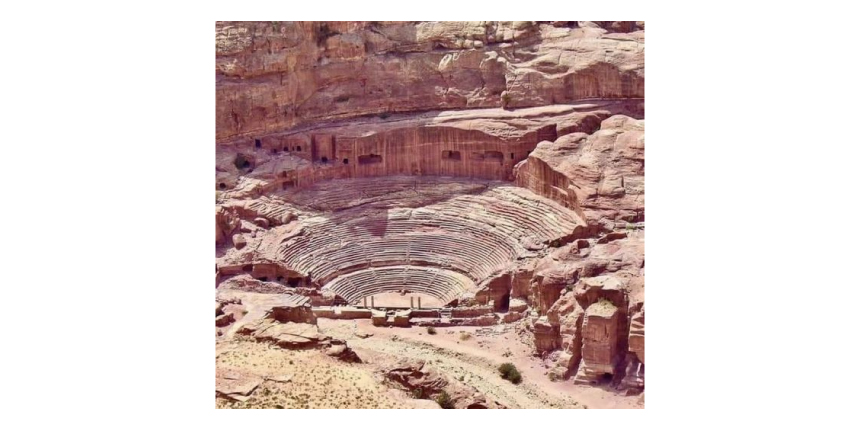
Source: Pinterest
Other masterpieces of Petra, the ancient city, include the Royal Tombs, Silk Tombs, the Great Temple, and the High Place of Sacrifice. There's more than what meets the eye!
An Incredible Wonder!
From monumental structures to the fascinating facts and stories of crusaders, The ancient city of Petra is a marvel of creativity and inspiration and speaks volumes to the power of social status and cultural beliefs. The strategic planning, elevations, and glorious facades bewitch the travellers and astound a sense of wonder. So if you ever plan for a Jordan itinerary, explore the mesmerising Petra City.
''*Images used are for illustration purposes only. Interior Company does not hold any copyright to the images unless mentioned explicitly.
Ready for a home transformation?
Let our designers assist you!
Recent Posts
Nestled amongst the rugged desert of Jordan, Petra is about 150 miles from Amman, the southern capital of Jordan. Today it is a popular tourist destination known for its captivating history and remarkable architecture.
Nabateans, an Arab Bedouin tribe built the city of Petra as a thriving trading hub between the Mediterranean, Arabian Sea, and Gulf.
Built over 2,000 years ago, the ancient city of Petra was the capital of the Nabataean kingdom in the 4th century BCE. Designed from the influences of the Greek and Roman styles, Petra in Jordan is carved from red sandstone and noted for its innovative feat of engineering and architecture.
Crafted from stone, the ancient city of Petra dates back thousands of years and exhibits exquisite facades and an array of architectural styles, including Nabataean, Greek, and Roman. Boasting grandeur tombs, religious structures, theatres and an innovative water management system- testify to the city’s iconic cultural architecture.
Related Category
- Bedroom
- Exterior Design
- Kitchen
- Living Room
- Paint and Color




